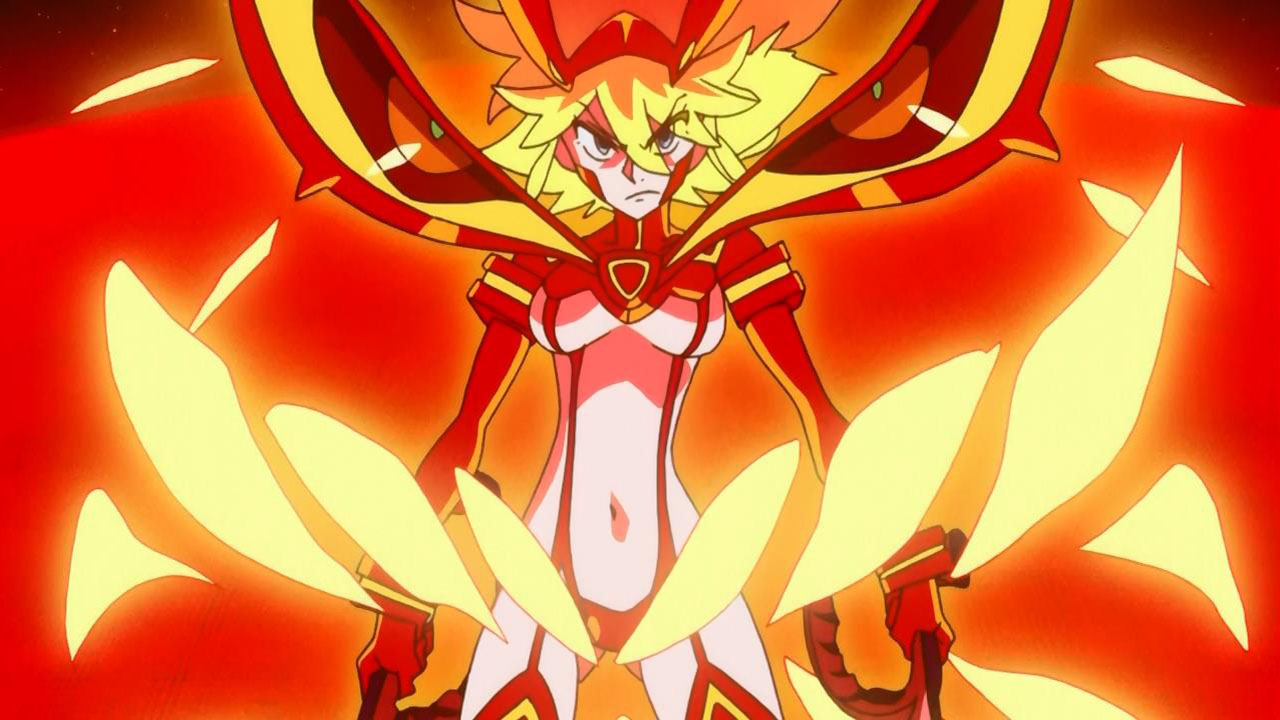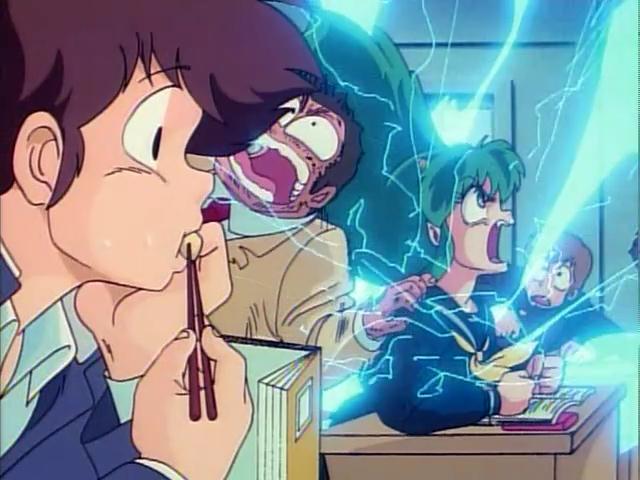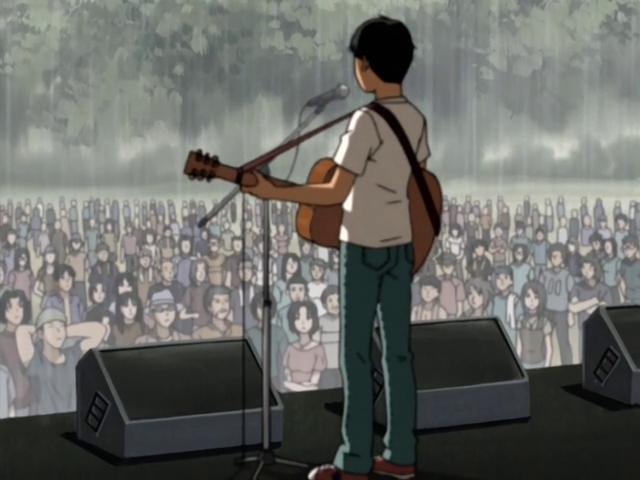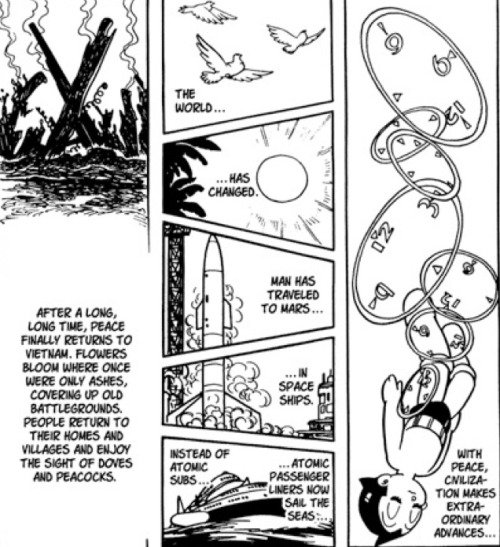09.10
In the world of animated series, there are a plethora of great episodic masterpieces, from the humor of Rocko’s Modern Life to the great stories of Batman: The Animated Series or Cowboy Bebop. However, as amazing as any of those more episodic series can be, it can’t be denied that they have their limitations in story-telling possibilities. After all, there is only so much you can do with just a mere half-hour at a time to work with. This is where the beauty of fully realized story-arcs come into play. By extending a story-line across multiple episodes or chapters, you now have the possibility for grand plots to build up and interesting character development to ensue, a feat which shines in works like Gargoyles, Avatar: The Last Airbender, and many other cartoons of that nature. In particular, though, it is with the medium of Japanese animation and comics where this style of story-telling has been more commonly practiced for a longer period of time. Considering that trying to list the best story arcs out of anime, manga, AND all other sources of animation and comics would be nearly impossible, we decided to honor the greatest story arcs of just anime and manga for this list, perhaps saving any other medium for future lists.
Please keep in mind that this is an OPINIONATED list. In no way do we claim that our choices are factually better than any others, so don’t get so sore if your favorites are not featured, here. We also had some ground rules set while making this list, which forced us to exclude certain other choices, so please read this thread for more information on that.
Putting all of that technical drivel aside, we now proudly present the first part of our list of the greatest story arcs from Japan ever put to pen and paper or the television screen.
#30. Covers (Kill La Kill)

Creators: Hiroyuki Imaishi, Kazuki Nakashima
Originally Aired: 2014
Anime: Episodes #16-24
Studio: Trigger
North American Distributor: Aniplex of America
Streaming: Crunchyroll
Satire is a funny thing. It can either be wholly pretentious and so up its own ass that it’s unintentionally fun to mock, or in the case of Kill La Kill, it can be presented in the most over the top fashion in a way that clearly doesn’t take itself too seriously. The latter can make for something that’s both metaphorically relevant in what it has to say about society, while simultaneously being intentionally hilarious, which is no easy feat to accomplish. In a world where fashion is everything and the clothes that you wear literally determines your status within society, KLK presents us with an immediate moral struggle for uniformity versus individuality. Thankfully, it does this in the most tounge-in-cheek of tones while still not losing the message in translation. The Lady Ragyo of REVOCS heads a global corporation that literally intends to take over the world with brain-washing clothes (no, seriously….I’m not shitting you….yeah, God bless the possibilities of anime), forcing protagonist Ryuko to band together with friends and rivals alike to take her down.
In this story, clothes are everything, and I really do mean it. From mind control and dominance, to the super-power inducing Goku uniforms, to a shit-ton of manga and anime references. However, the concept is so rich that it can speak volumes about modern society in general. Whether it’s Japan, North America, or almost anywhere overseas, many cultures seem to be unintentionally aggregating to whatever is popular at the time, be it clothes, music, television, or numerous boring fads. And it doesn’t just need to apply to that context. How about something a little closer to home? How many boring and safe anime do we get plagued with every year that does the same “moe” shit that we’re all tired of, yet get enough pander-happy otaku to support them and remain profitable?
By no means is this a new concept. It’s been done to death in in all mediums of entertainment. So what makes this one stand out? Most likely the fact that unlike many other stories of this nature, this one doesn’t give a rats ass about preaching anything to the viewer, who it expects doesn’t need to be taught any lessons. Instead it just crafts an interesting story with great characters that are entertaining to watch, and has as much goddamn fun with parodying the concept as possible. Admittedly, as something that literally only aired this years it may be a bit too early for us to consider ranking something like this on a list full of proven classics that have stood the test of time. Normally we would wait a solid year since the end of airing to determine how something holds up. However, as the most fun anime to come out in an era of anime where we have been long overdue for one, we just had to let our bias get the better of us. Toss in some awesomely unique artwork, incredibly zany and fluid animation, and mix it with one of the most kick-ass anime soundtracks to ever be conceived, and you have the best anime of the past year, and certainly one of the best story arcs ever. ~Dr. Ensatsu-ken
#29. Boy Meets Girl (Urusei Yatsura)

Creator: Rumiko Takahashi
Original Years of Publication: 1986-1987
Manga: Volume #34, Chapters #356-366
Anime: Urusei Yatsura: The Final Chapter
Studio: Magic Bus
Japanese Publisher: Shogakukan (Weekly Shonen Sunday)
North American Publisher: N/A (formerly Viz Media)
North American Distributor: N/A (formerly AnimEigo)
Recommended Version: Anime
With the exception of battle-shonen parodies and some rom-coms, gag-manga don’t typically have many long story arcs. If they do, they typically will at most last a volume, rarely more. This is especially true of older series, and Urusei Yatsura, the mother of practically all modern anime/manga comedies, was no exception. “Boy Meets Girl” is the longest story in the entire series, suitably so, since it is the final one. You would think a gag-manga of this nature would just end on some self-referential outing, a silly throw away story that doesn’t resolve anything but presents a sense of finality and leaves the series on a high note. Rumiko Takahashi’s most popular work, the gender-bender rom-com Ranma 1/2, ended like this, going out in a two-volume long sorta-battle shonen-y arc where Ranma and friends fought against the evil (well, as far as Rumiko Takahashi comedy antagonists go) Phoenix people of Ho’oh peak, which didn’t resolve anything, but was a fun way to end a series that didn’t take itself that seriously anyway.
But the final arc of Urusei Yatsura, Rumiko Takahashi’s first and most influential series, is a bit different. There is not just finality, but the central characters change here. Not just suddenly, but as payoff on an entire series of subtle but sure character development. This boy-meets-alien girl comedy started off as what you’d expect of the premise: alien girl Lum takes a liking to hapless lovable (though not at first) loser Ataru, for no apparent reason, and dotes after him while the reluctant boy pushes off her advances. As the series went on, though, the relationship between the characters grew into something more meaningful. The characters developed in subtle ways and we saw more of their personalities, and why they’d both care about each other, even if Ataru would never admit it. The relationship between the two, and their interactions with their friends and family, is what drives the entire manga.
The final arc of Urusei Yatsura takes that relationship and challenges it. It forces the characters to mature, and things to progress. A recurring theme in Urusei Yatsura is embracing one’s adolescence before it becomes time to grow up. Lum and Ataru, for all their quarreling, truly care about each other, but like their relationship the way it is. They want things to stay as they are for as long as it can. It’s an idea that drives the second and fourth movies of the Urusei Yatsura film franchise in particular, and there is no absence of evidence in the series and manga. But here Lum is forced to become an adult, whisked away against her will to marry someone she doesn’t love. Ataru does not hesitate to give away his book of girls’ phone numbers and addresses, essentially giving up his girl-hunting ways, all for the sake of rescuing Lum. What happens when the two are reunited is a series of misunderstandings that leads to a falling out, but this time, Lum getting mad and yelling “Darling, you idiooottt!” while shocking Ataru with her signature electric attacks will not resolve anything. Both have been hurt by the other, and refuse to make up with each other before the other apologizes first. But soon an accident takes everything back to where the series first began, the game of tag that first brought Lum and Ataru together. In order to save the earth from being covered by a spread of fast-growing gigantic mushrooms, Ataru must once again touch Lum’s horns, a task he has no chance of succeeding at, unless he gives in to Lum’s one simple demand. Ataru must tell her that he loves her. And if he doesn’t, Lum will quit. She will ditch Ataru, and the life on earth she loves so much, and all the friends she’s made. And with the aid of a memory-erasing device, she will make everyone, including Ataru, forget her, her alien friends, and all the time they’ve spent together. For the residents of Tomobiki-cho, most of whose lives were enriched from their association with Lum, things will be as if she never existed at all.
There is a lot on the line here. The earth is at stake, people’s memories are at stake, people’s friendships and lives are at stake, and the relationship between the two main characters is put to it’s greatest test. Lum has never been more desperate, just wanting to hear the words “I love you” at any cost, regardless of whether it’s genuine or not, willing to risk it all if the words are never said. But Ataru knows, under the circumstances, that if he says those words, that while the earth might be saved, while things can stay the way they’ve always been, Lum would never know the truth for the rest of her life. And so he refuses, all the way to the bitter end. All I can say is that the way this conflict is resolved embodies the age-old adage “actions speak louder than words,” and an ending that, while at first glance may seem like things will go on as usual, but upon reflection, is a truly definitive, meaningful ending to a wonderful, fun series.
There are few endings in comedy anime/manga that are as strong as this on a character level. Urusei Yatsura did not start out as a series that took it’s central relationship seriously, yet, it developed it and two characters in far more meaningful ways than just about any anime/manga comedy of this ilk, and more “serious” and plot-driven rom-coms, ever do, including Takahashi’s subsequent series Ranma 1/2 and it’s numerous imitators. But on top of the strong character arcs being resolved here, this arc just captures the spirit of the entire manga so damn well. It’s cleverly funny, involves some crazy sci-fi adventure antics, brings the bulk of the massive ensemble cast back together, and in bringing back an element of the very first story in the series, the game of tag, things feel circular, and the story feels like a rewarding conclusion for the series proper. And it does this all in eleven chapters. It’s a perfect ending. There’s a reason why nobody enjoys the sixth movie, outside the fact it’s a shallow imitation of the strengths of the series: the ending of UY leaves on too final a note for one to really want to see more, leaving what goes from here on to the imagination. That’s what a good ending of any series should do. That’s what makes this arc stand out from other comedy anime/manga story arcs. And it’s why it makes this list. End of story. ~Cartoon X
#28. Urumi (Great Teacher Onizuka)

Creator: Tohru Fujisawa
Original Year of Publication: 1998
Manga: Chapters #53-66
Anime: Episodes #16-19
Studio: Studio Pierrot
Japanese Publisher: Kodansha (Weekly Shonen Magazine)
North American Publisher: Tokyopop [Defunct]
North American Distributor: Discotek Media
Recommended Version: Anime
So, do you all know the story about a dysfunctional group of troubled youths trying to find their way in life, but who are just so misunderstood that they must cause mischief and mayhem to gain attention, until one day a good-hearted teacher comes along to teach them that they have a path in life and that people will give a shit about them if they just open their hearts to the outside world? Yeah, GTO is the complete “fuck you” antithesis to that kind of story. The self-proclaimed “Great Teacher” Onizuka is a delinquent with a shady background who literally somehow weasels his way into becoming a middle school teacher because he thought that status would give women the hots for him. However, to his dismay, it doesn’t do diddly-squat for his status and if that isn’t a big enough blow to his ego, he is dumped into being the home room teacher for the most notoriously sinister, trouble-making, teacher-despising class 3-4, who have thus managed to successfully run every predecessor of Onizuka’s out of the school by driving them crazy. However, Onizuka is going to take none of that shit lying down, and most of the fun of the series deals with Onizuka reforming each student in his class, one-by-one, only playing them at their own game in the process. In real-life, that would be a horrible way to teach kids life-lessons, but that’s why this is a comedy manga. Onizuka spends most of the early portions of the series one-upping every little punk who tries to to stand in his way….until he finally meets his first true match, with the student prodigy, Urumi Kanzaki.
Urumi, as it turns out, was playing hookie from school because quite frankly it wasn’t even the least bit challenging for her, and like most of her class, she had her own personal deep-resentment of teachers. She ends up coming back after being called in by those of her class-mates who have not been turned over to Onizuka’s side, hearing of how “challenging” this new teacher is to get rid of. What results is a clash between the two of them that is unlike anything that Onizuka has been through before. On the one hand, this arc is just as tight as any other in the series with tons of gags and great laughs to be had in the shenanigans pulled by both sides. However, beyond that it is particularly great for representing the series due to how heartfelt it can get without crossing into the territory of being downright corny. As the confrontation between the two gets more heated, Onizuka soon realizes that Urumi, unlike the students before her, is completely willing to cross the line and even put others at severe risk for serious damage. This causes him and various other classmates to have to look further into Urumi’s troubled past and determine the root of where her problems truly stem from. The resulting conclusion is something with a genuinely emotional punch to it. Really, this arc could be considered more of a place-holder for the series as a whole, but we picked it because it perfectly represents both facets of what the series does well when it’s at its absolute best. ~Dr. Ensatsu-ken
#27. The Greatful Sound Festival (BECK: Mongolian Chop Squad)

Creator: Harold Sakuishi
Original Years of Publication: 2000-2002
Manga: Chapters #14-32
Anime: BECK: Mongolian Chop Squad – Episodes #11-25
Studio: Madhouse
Japanese Publisher: Kodansha (Monthly Shonen Magazine)
North American Publisher: Tokyopop [Defunct]
North American Distributor: Funimation
Streaming: Hulu
Recommended Version: Anime
Take the standard shonen formula of plucky heroes against an unstoppable evil and make the heroes a rock n roll band then have the villains be the hurdles that come from it and you have BECK: Mongolian Chop Squad. This unique manga/anime is a story about a rock band saving the world from the corporate stiffness of the modern music industry and how terrible it has become. It’s a unique twist on the old shonen formula, and one that successfully carried the manga through 34 volumes and an almost ten year run while simultaneously being a very apt critique on how awful the music industry has been since the manga first started.
But the most memorable arc will always be the first major one (covered in the original anime series, and improved on it as it was the anime’s climax) which involves the unknown group of mysterious musicians to come together and slowly work their way through the underground music scene while dealing with the pitfalls and successes that come with modern life. The story reaches its peak when the band is allowed to play the legendary “Greatful Sound Festival” that has itself been taken over by payola enablers and lame modern music managers just as the airwaves have. The band makes a deal with a crooked record exec after securing the spot which means they must either preform the show of their lives or give up on their dream. This sets up the whole “Do people prefer the music the industry tells them to like or do they go with what sounds good?” theme that floats by on occasion throughout the entirety of the manga’s run.
The climax, however, is probably one of the most energetic you will ever see in a shonen anime. It might not be a battle of guns, fists, or blades, but it manages to be just as intense– and all it is is a concert.
It’s the arc everyone remembers from BECK, and the one that received the most publicity due to actually being made into the highlight of the anime series, but more than that, it is highly energetic, memorable, and will probably have you cheering along with the crowd. Sure there are music shows out there (and terrible shows that use music as a crutch for lack of things like plot or purpose) but BECK remains the best and the one any fan of manga or anime should experience. ~Spark of Spirit
#26. “Once Upon A Time” Astro Boy Tales (Astro Boy)

Creator: Osamu Tezuka
Original Years of Publication: 1967-1969
Manga: Volumes #6-8
Japanese Publisher: Kodansha
North American Publisher: Dark Horse Comics
If you have been an anime and manga fan for more than 2 seconds, then you should already know who Osamu Tezuka is. Regarded as the “God of manga,” and one of the key figures responsible for making the medium a respected art form, Tezuka was not just a man full of ideas, but also a man fascinated with philosophy, technology, and the human condition. His comics explore a variety of subjects and themes, be them political, social, or historical. This includes what is surely Tezuka’s most popular work, at least in terms of name recognition, Astro Boy. Do not let it’s childish exterior fool you; Astro Boy is no less well-written or lacking in Tezuka’s signature commentary on all aspects of modern life. No storyline in Astro Boy best exemplifies this than it’s longest, and most ambitious; the “Once Upon A Time” Astro Boy Tales arc.
Initially made to answer fans’ questions concerning the fate of our hero at the end of the 1963 Astro Boy anime, the arc sees Astro Boy blasted back in time from the 21st century to 1969. In a world without advanced robotics, Astro Boy struggles to survive and find a way back to his own time. What follows is Tezuka re-inventing the origins of his (at this point) seventeen year old series, as Astro Boy makes new friends and enemies and encounters several familiar faces, while getting involved in troubles of the modern day. But without the fuel necessary for him to survive, Astro Boy fights against the clock, his inevitable death weighing on his mind. Yet, even so, he does not hesitate to stand up for what is right, though as he soon finds out, there is only so much of a difference he can make…
The reason Astro Boy, as a series, has endured over all these years is because while it features fun, action-packed stories to entertain children, it also contains layered, complex storylines that grow increasingly more relevant the closer we approach a time where artificial intelligence and robotics will bring such longtime fantasies of robot and human co-existence a reality. In this arc, Tezuka touches upon the development of robotics and artificial life and it’s ethical and moral consequences, which soon leads into a contemporary commentary on the civil rights movement. Tezuka provides no easy answers, and few true villains in the issue, and though Astro Boy tries his best, ultimately, he cannot single-handedly change people’s minds, or save people’s lives. But this isn’t the only issue the arc explores. Finding fulfillment in one’s life, what it means to be in love, to be a friend, to have a family, to be a human being, and to not, as well as the consequences of advancing technology in daily life and the workplace, humanity’s innate fear of the unknown and unfamiliar, the cost of war and dangers of the atomic bomb, and so, so much more is explored and developed as Astro Boy lives across decades, experiencing the best and worst of humanity, while coming to terms with his own mortality. At one point, Tezuka even comments on the Vietnam war, resulting in a powerful sequence where Astro Boy exhausts all his power to save an innocent village where a newborn baby has just been born from being wiped out. Yet his noble deed proves naught, as new bombers come the very next day, destroying the village, killing everyone, including the day-old baby. And when Astro Boy reawakens in the future, he is left none the wiser that his sacrifice was in vain. It’s a somber sequence, musing on the futility and pointlessness of warfare, and a moment of political commentary that you simply can’t find in a modern battle shonen series, perhaps even in most seinin series either, especially handled with such delicacy and tact.
Complementing the wealth of social and political commentary in the arc is the re-invention of Astro Boy’s own origin. We learn how characters like Professor Ochanomizu, Shunsaku Ban, and Astro Boy’s own creator, Dr. Tenma, came to be who they are, and are shown how Astro Boy became the hero he was destined to be. It’s a fascinating story that succeeds in adding a greater depth to the characters while providing a starting point for the beginnings of whole new adventures. You’d be hard-pressed to find another story arc in a mainstream anime or manga series that could combine so many ideas and themes in the masterful way Tezuka does here, and these mere 2 and a half volumes showcase some of the best qualities of Tezuka as a writer and creator. For over forty five years this story arc has stood the test of time, and is perhaps even more relevant now than it was back then. It endures as a powerful reflection of the issues of it’s time, as well as those of the present and the future; a timeless tale that will forever continue to impress and resonate with readers of any age. ~Cartoon X